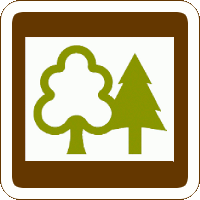Follow the brown signs




Forestry Commission
“The death of the forest is the end of our life” Dorothy Stang (1931 – 2005)
Gosh, I never knew that!
There are over 3 million acres of certified woodland in the UK, of which over 2 million acres is managed by the Forestry Commission which plants over 24 million trees every year.
A little bit of history
The Forestry Commission was set up at the beginning of WWI to meet the increasing need for timber for use in warfare and especially for the thousands of supports needed for the hundreds of miles of allied trenches. Since the middle ages Britain’s forests had been ever decreasing and hundreds of years of felling without proper management or plans for sustainability meant Britain’s forest cover was at an all time low of only 5% and there was a heavy reliance on timber imports by the early 20th Century. Thus in the years running up to WWI the Commission was tasked with the acquisition of land to be planted up and used to provide a home grown supply of timber, and so began a massive reforestation project. In the first 20 years the Forestry Commission had planted 138,000 acres of forests and another 54,000 new acres were planted through grants provided to the private sector. The continual planting and efforts to maintain British timber supplies paid off and by the time WWII came around Forestry Commission forests were providing the pit props of the mines providing much needed coal that was powering the armaments industry. After WWII with rationing still in place and with a severely depressed economy Britain needed to supply home grown food and forest replanting was only allocated to areas that were deemed too poor for agricultural use. Despite this, the 4 decades post WWII saw big expansion, pushed forward by investment in research and output coming on leaps and bounds by the mechanisation of previously man and horse powered processes.
Forestry Commission forests became an “attraction” in the late 1960s when they opened their doors to visitors amid growing awareness of the importance of access to natural outdoor spaces. The general public were given the “freedom to roam” and more attention was paid to growing aesthetically pleasing as well as productive forests. And now? Well the Forestry Commission continue to research, plant, manage and inspire through their work, summed up pretty well on their website: “Environmental concerns are well to the fore and forest officers work closely with conservation groups. Wildlife projects underway include help for threatened species such as the red squirrel and nightjar. Now more than ever, we consult widely before decisions affecting woodlands are taken. Formally and informally specialist bodies, local groups and general public offer advice and opinions on our work, and private owners are encouraged to obtain advice and approval before making key decisions. Ventures such as the Valleys Forest Initiative in Wales have brought local people a new sense of ownership of their woods.” Pretty fantastic work and work that is open for us all enjoy, brilliant, no?
Organisations, official bodies and great links to places where you can find out more
www.forestry.gov.uk – The official Forestry Commission website, packed full of things to do, places to go and activities to get involved in.
Here’s a great Timelog which charts the events that shaped Britain’s forests and woods.






